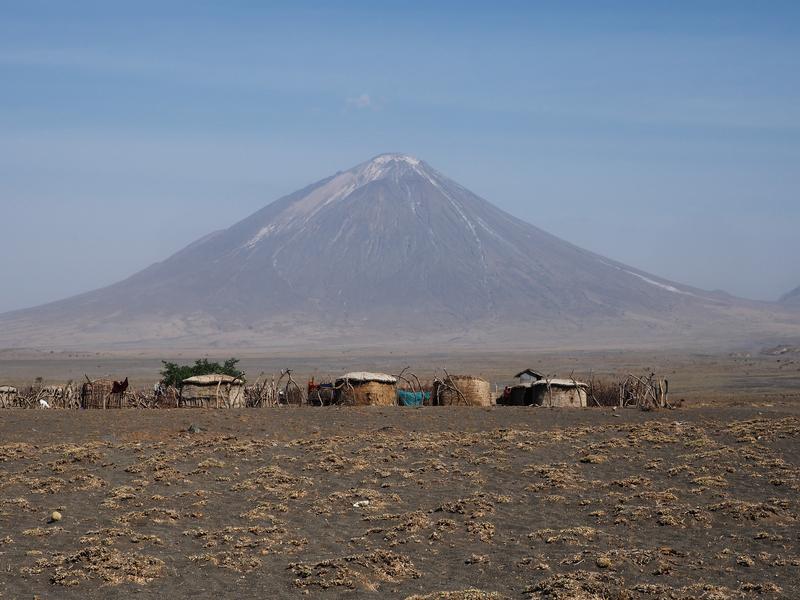Understanding volcanoes better
Researchers of Mainz University located volcanic tremor caused by magma movement
How do volcanoes work? What happens beneath their surface? What causes the vibrations – known as tremor – that occur when magma or gases move upward through a volcano's conduits? Professor Dr. Miriam Christina Reiss, a volcano seismologist at Johannes Gutenberg University Mainz (JGU), and her team have located such tremor signals at the Oldoinyo Lengai volcano in Tanzania. "We were not only able to detect tremor, but also to determine its exact position in three dimensions – its location and depth below the surface," said Reiss. "What was particularly striking was the diversity of different tremor signals we detected." The findings provide new insights into how magma and gas are transported within the Earth and thus improve our understanding of volcanic dynamics. This also has societal relevance as the researchers hope that their work will enhance the ability to forecast volcanic eruptions in the long term. Their results have recently been published in "Communications Earth & Environment".
Tremor provides insights into volcanic activity
When magma rises from depths of the Earth toward or into a volcano, this can cause shaking. If the magma exerts high pressure, the surrounding rock can fracture – resulting in earthquakes. Other processes can cause milder vibrations, known as tremor, for example when magma ascends through pre-existing channels, when gases escape from magma, or when pressure fluctuations occur in the transport pathways. "For volcano seismology, it is extremely interesting to study these signals and wave types that arise when magma moves below the surface," said Reiss. Two key questions drive her research: Where exactly does tremor originate? And what process leads to its generation? The answers to these questions can reveal crucial information about the state and activity of a volcano.
Together with her team, Reiss recorded seismic data at the Oldoinyo Lengai volcano in Tanzania over 18 months. They installed numerous seismometers around the volcano to detect ground vibrations. Back in Mainz, the researchers analyzed the data, focusing on a nine-week time window for this study. "For the first time, we were able to determine the precise location where tremor occurs," stated Reiss. "We discovered that two types of tremor seem to be linked: one originated at around five kilometers depth and the other near the base of the volcano – with a time delay between them. It is clear that these signals are connected, thus we see a directly linked system here." The diversity of tremor signals detected by the team was also surprisingly large. This likely reflects that the tremor originates from different regions of the volcano, each with distinct properties and driven by different processes. Oldoinyo Lengai itself is unique in that it is the only active carbonatite volcano on Earth. Its magma has an unusual composition as it is far more fluid and relatively cool, only about 550 degrees Celsius, compared to the 650 to 1,200 degrees Celsius typical for most magmas. "The results were particularly surprising because the magma is so fluid. We had expected few or no tremor as the interaction with the surrounding rock would likely be weaker," explained Reiss.
A step forward for volcano seismology
The new findings by Reiss and her colleagues advance volcano seismology by offering valuable insights into the dynamics of magma movement. "Tremor occurs whenever magma is moving – including before eruptions," said Reiss. "But which tremor signals are true precursors of an eruption, and which are just background 'gurgling'? Our results lay the foundation for improving eruption forecasting in the future."
Image:
https://download.uni-mainz.de/presse/09_geowiss_oldoinyo_lengai.jpg
Oldoinyo Lengai in Tanzania is the only active carbonatite volcano on Earth.
photo/©: Miriam Reiss
Read more:
https://press.uni-mainz.de/energy-from-the-depths-of-the-earth-collaborative-research-project-studies-temperature-induced-change-of-rocks-in-geothermal-reservoirs/ – press release "Energy from the depths of the Earth: Collaborative research project studies temperature-induced change of rocks in geothermal reservoirs" (12 May 2025)
Wissenschaftlicher Ansprechpartner:
Junior Professor Dr. Miriam Christina Reiss
Volcano Seismology
Institute of Geosciences
Johannes Gutenberg University Mainz
55099 Mainz, GERMANY
phone: +49 6131 39-30846
e-mail: miriam.reiss@uni-mainz.de
https://www.geosciences.uni-mainz.de/seismology/
Originalpublikation:
M. C. Reiss et al., Tremor signals reveal the structure and dynamics of the Oldoinyo Lengai magmatic plumbing system, Communications Earth & Environment, 1 October 2025,
DOI: 10.1038/s43247-025-02804-1,
https://www.nature.com/articles/s43247-025-02804-1
Die semantisch ähnlichsten Pressemitteilungen im idw


